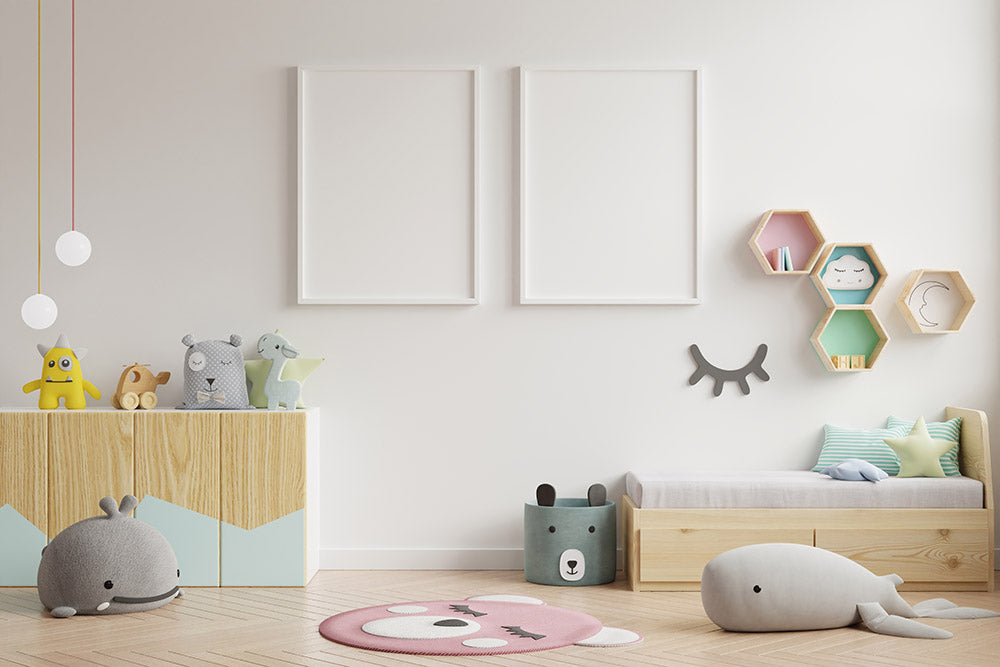
How to design Kids room
Share
Designing a kids' room involves creating a space that is functional, safe, and reflects the child's personality and interests. Here are some steps to help you design a kids' room:
Remember, designing a kids' room should be a collaborative and enjoyable process. By considering their needs and preferences, you can create a space where they feel comfortable, inspired, and able to express themselves.
Plan the Layout:
Consider the available space and plan the layout accordingly. Determine the locations for key elements such as the bed, desk, storage units, and play areas.Choose a Theme or Color Scheme:
Select a theme or color scheme that will set the overall tone for the room. You can choose a theme based on the child's interests, such as sports, animals, or space, or opt for a gender-neutral theme.Select Furniture:
Choose furniture that is appropriate for the child's age and size. Include essentials like a comfortable bed, a study desk, and storage options like a wardrobe or shelves. Consider furniture with rounded edges for safety.Create a Cozy Sleeping Area:
Place the bed against a wall or in a corner to maximize space. Use colorful and comfortable bedding that complements the room's theme or color scheme. Consider adding a canopy or tent for a playful touch.Set Up a Study Area:
Dedicate a corner or wall for a study area. Provide a desk or table, an ergonomic chair, and good lighting for reading and studying. Add storage solutions like shelves or bins for organizing books, supplies, and artwork.Include Ample Storage:
Children have lots of toys, books, and clothes, so incorporate plenty of storage options. Use bookshelves, cubbies, toy chests, or under-bed storage to keep the room organized. Labeling bins or using clear containers can help children find what they need easily.Add Playful Elements:
Make the room fun and engaging by adding playful elements like wall decals, murals, or removable wallpaper. Hang artwork or display the child's creations. Incorporate a reading nook, a play tent, or a small indoor gym if space allows.Ensure Safety:
Pay attention to safety measures. Secure furniture to the walls, cover electrical outlets, and use cord organizers. Choose non-toxic materials, avoid small items that could be choking hazards, and ensure that the room is well-ventilated.Include Personal Touches:
Involve the child in the design process to make the room feel more personalized. Let them choose some elements like bedding, wall art, or accessories that reflect their interests and tastes.Flexibility and Growth:
Keep in mind that children's preferences and needs evolve over time. Design the room with flexibility in mind, allowing for easy updates and adjustments as they grow older.Remember, designing a kids' room should be a collaborative and enjoyable process. By considering their needs and preferences, you can create a space where they feel comfortable, inspired, and able to express themselves.
